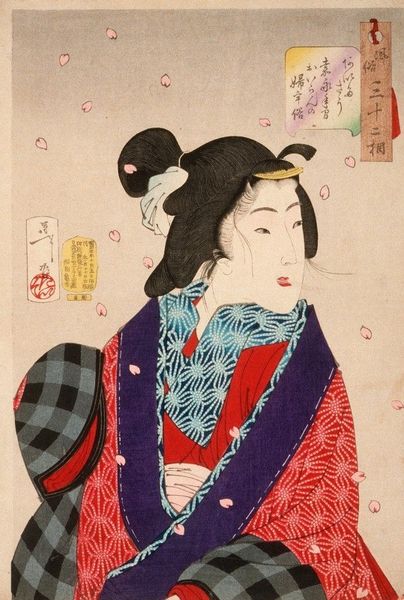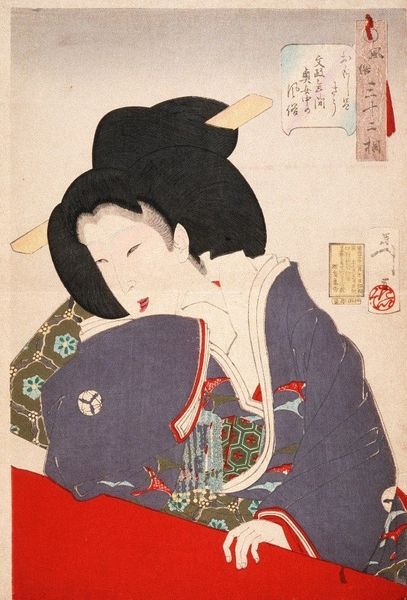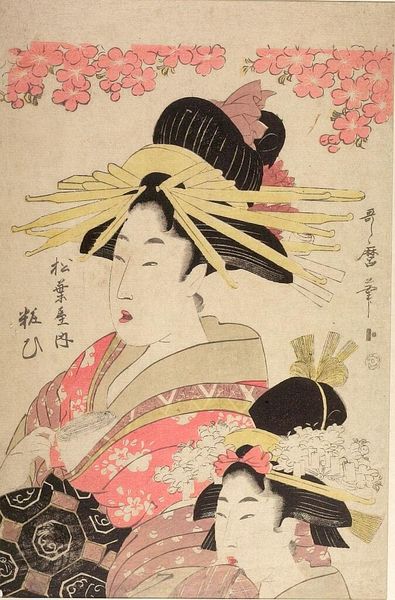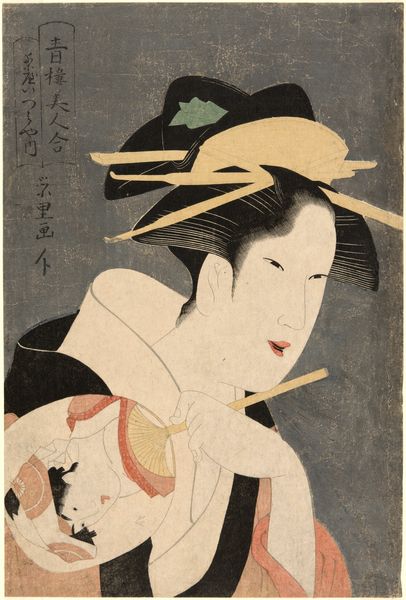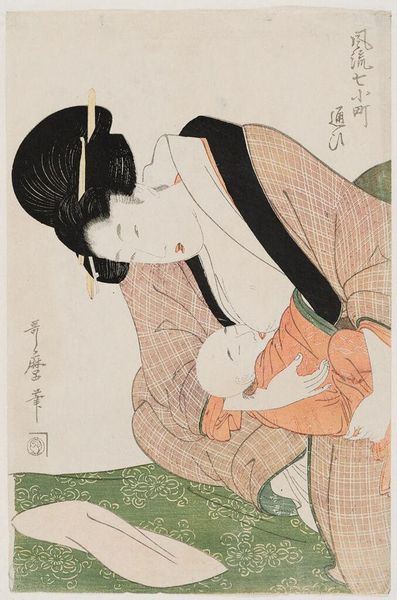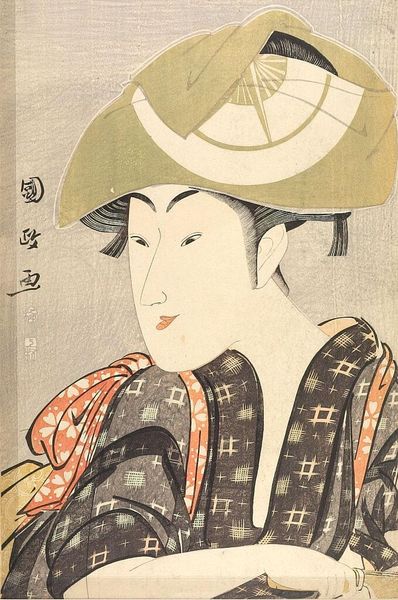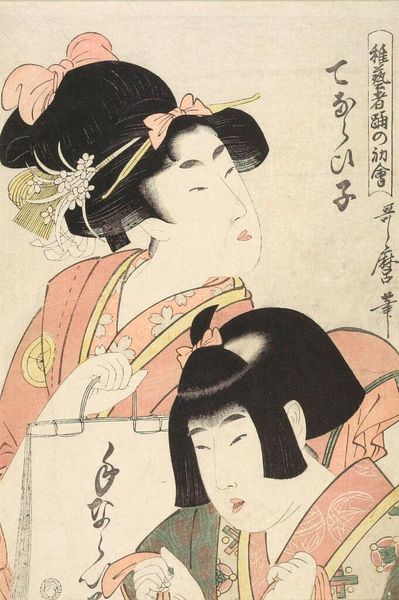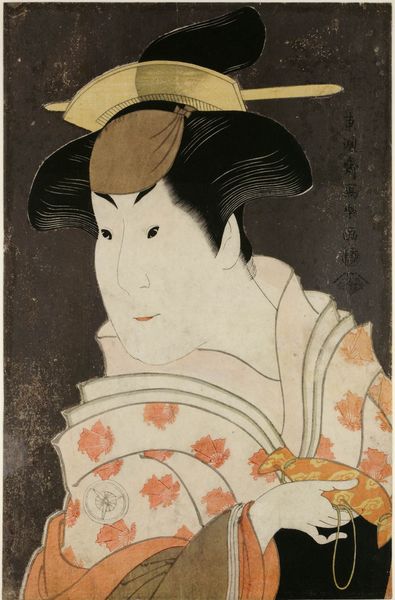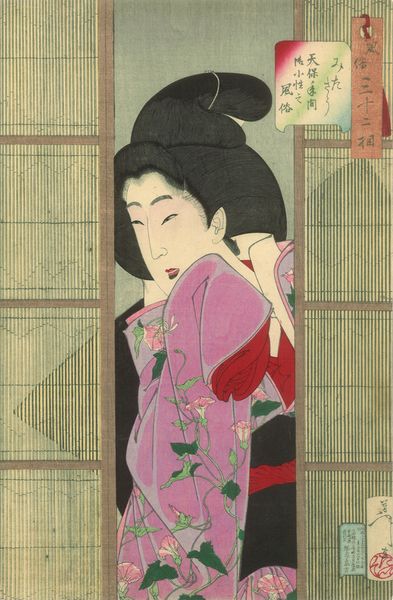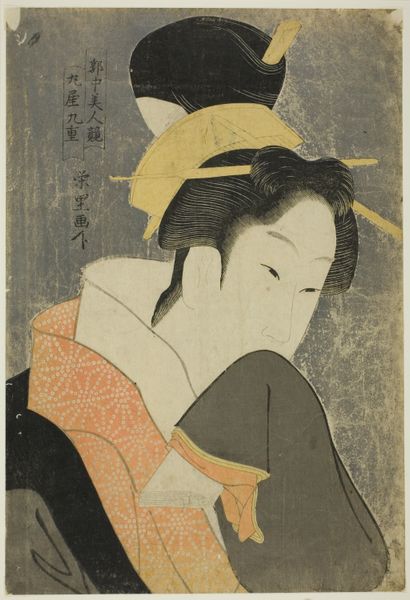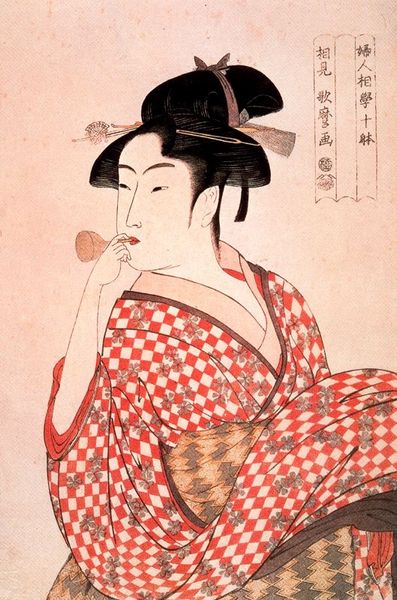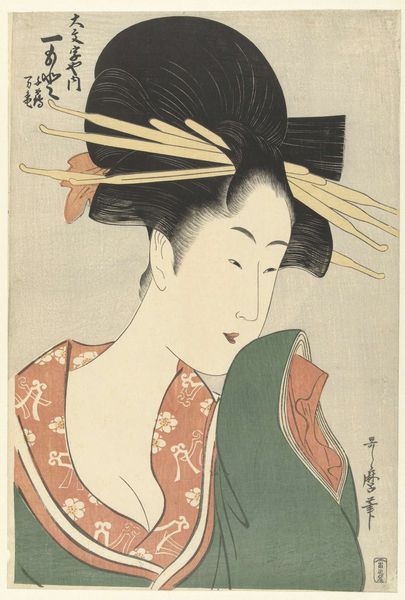
print, woodblock-print
#
portrait
# print
#
asian-art
#
caricature
#
ukiyo-e
#
figuration
#
woodblock-print
#
watercolour illustration
Copyright: Public domain
Editor: We’re looking at "Geisha," a woodblock print by Kitagawa Utamaro. It’s incredible how much detail is captured with this medium. The delicate lines and soft color palette create an air of tranquility, almost melancholic, despite the subject being a celebrated geisha. What aspects of its formal structure strike you most? Curator: Immediately, the emphasis on line and form dictates my reading. Observe how Utamaro employs contrasting textures—the smooth, unbroken planes of the face against the intricate patterns of the kimono, achieved through meticulous carving. It creates a visual tension. Notice, also, the high placement of the figure within the composition; how does this contribute to the work's overall impact? Editor: I think it makes her seem larger than life, emphasizing her presence. It draws attention to her posture, her hand delicately touching her neck, it conveys grace and sophistication. The limited color palette – blacks, yellows, reds, and grey – adds to the work's sophistication and understated elegance, too. Curator: Precisely. The carefully calibrated color choices augment the formal arrangements. Yellow against black hair functions semiotically to denote the artifice inherent in performance and identity. Note too the contrast between the flattened planes of the face and the textures in the clothing, it moves beyond the simply representational. The composition then is far from merely decorative; the arrangement of pictorial elements suggests underlying narratives of gender, beauty, and representation. Do you perceive an interplay between traditional printmaking techniques and innovative compositional approaches? Editor: Yes, now that you point it out, Utamaro plays with both, pushing boundaries while remaining rooted in the ukiyo-e tradition. It gives it depth. Curator: Indeed. This work invites us to analyze how traditional art practice might signify not only a cultural moment but also function as a system of complex arrangements unto themselves. Editor: I see the work now, less for what it depicts, and more for how the artwork's materials create layers of meaning. Curator: Yes, it's less of a window and more of a text to be decoded.
Comments
No comments
Be the first to comment and join the conversation on the ultimate creative platform.

